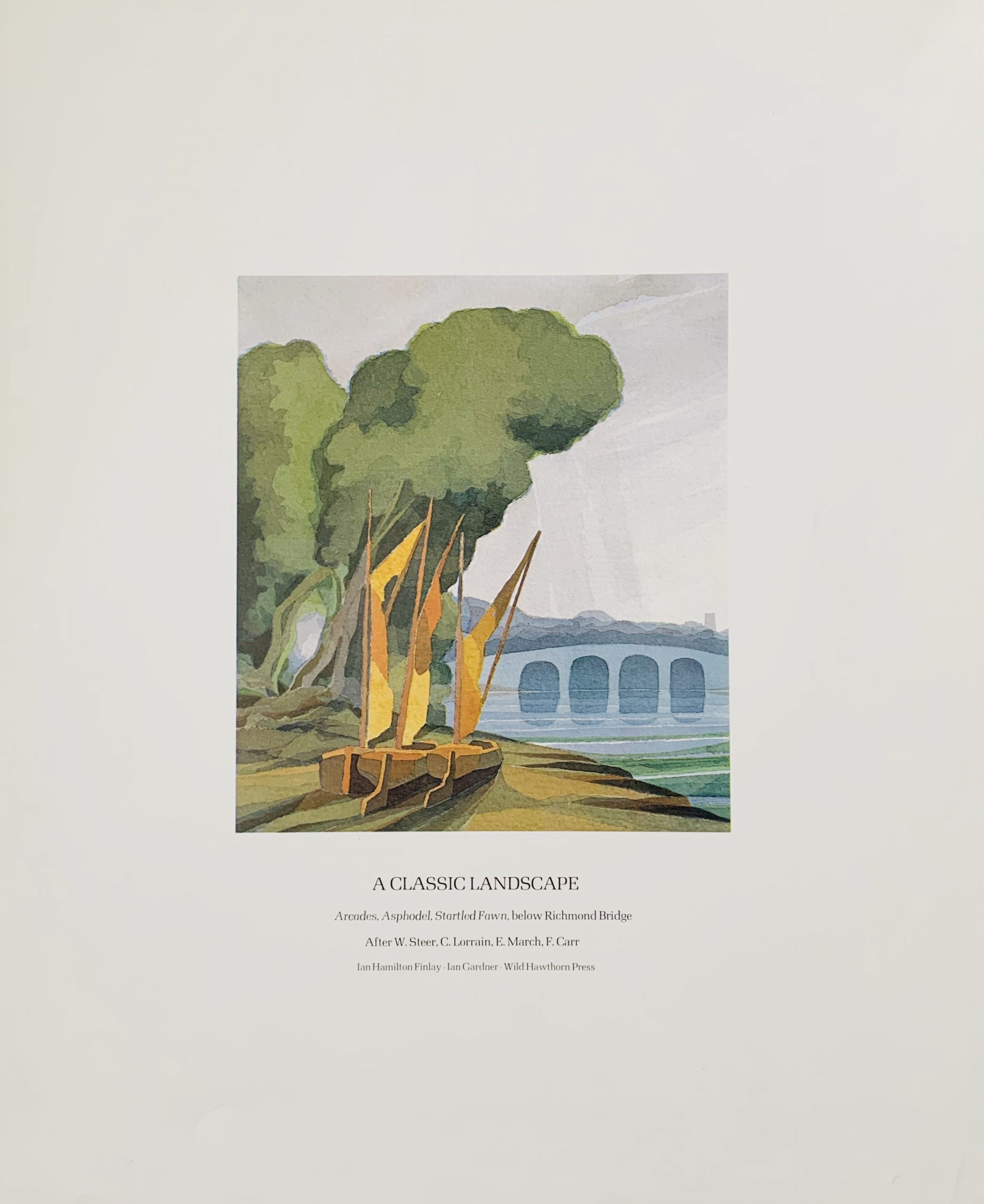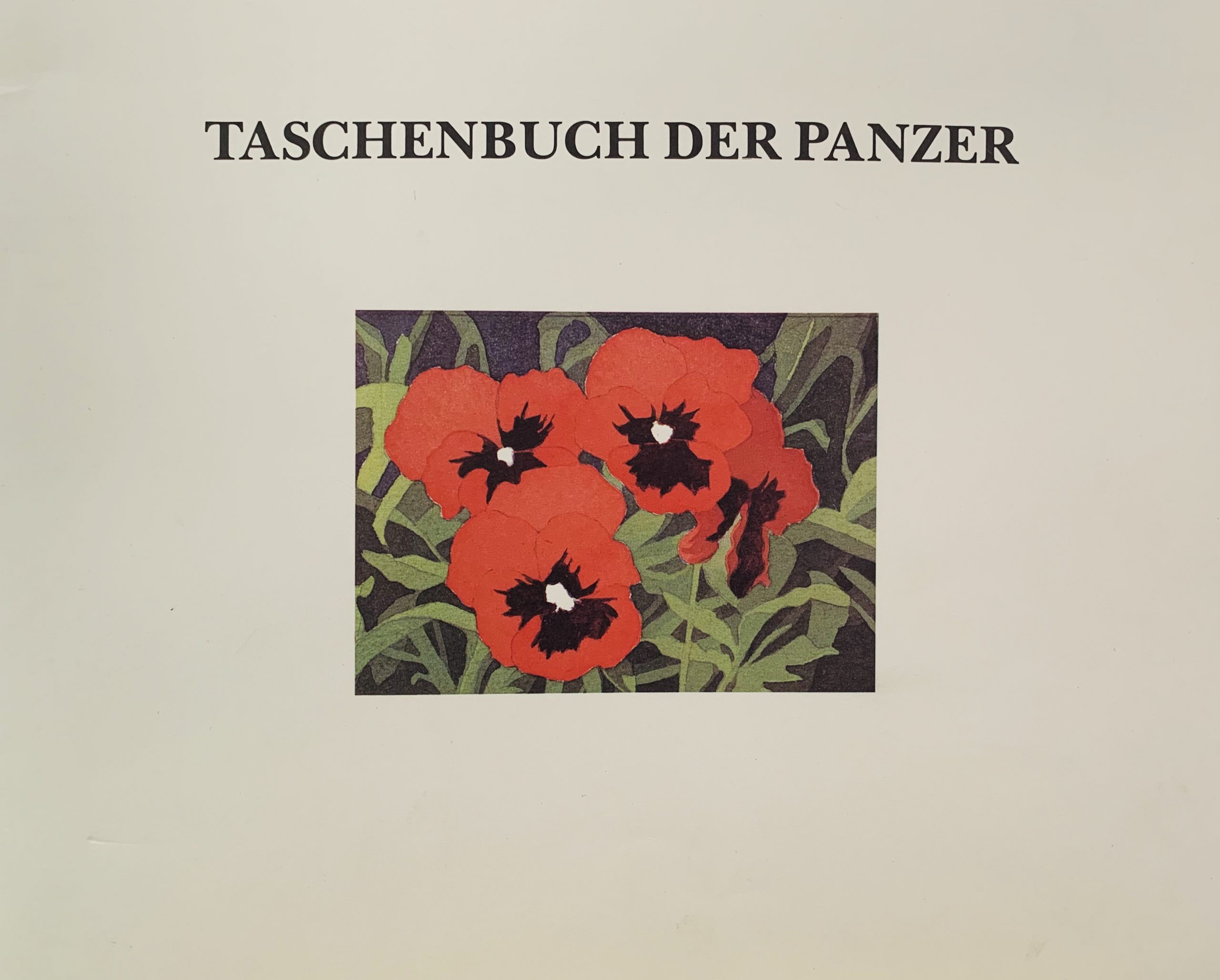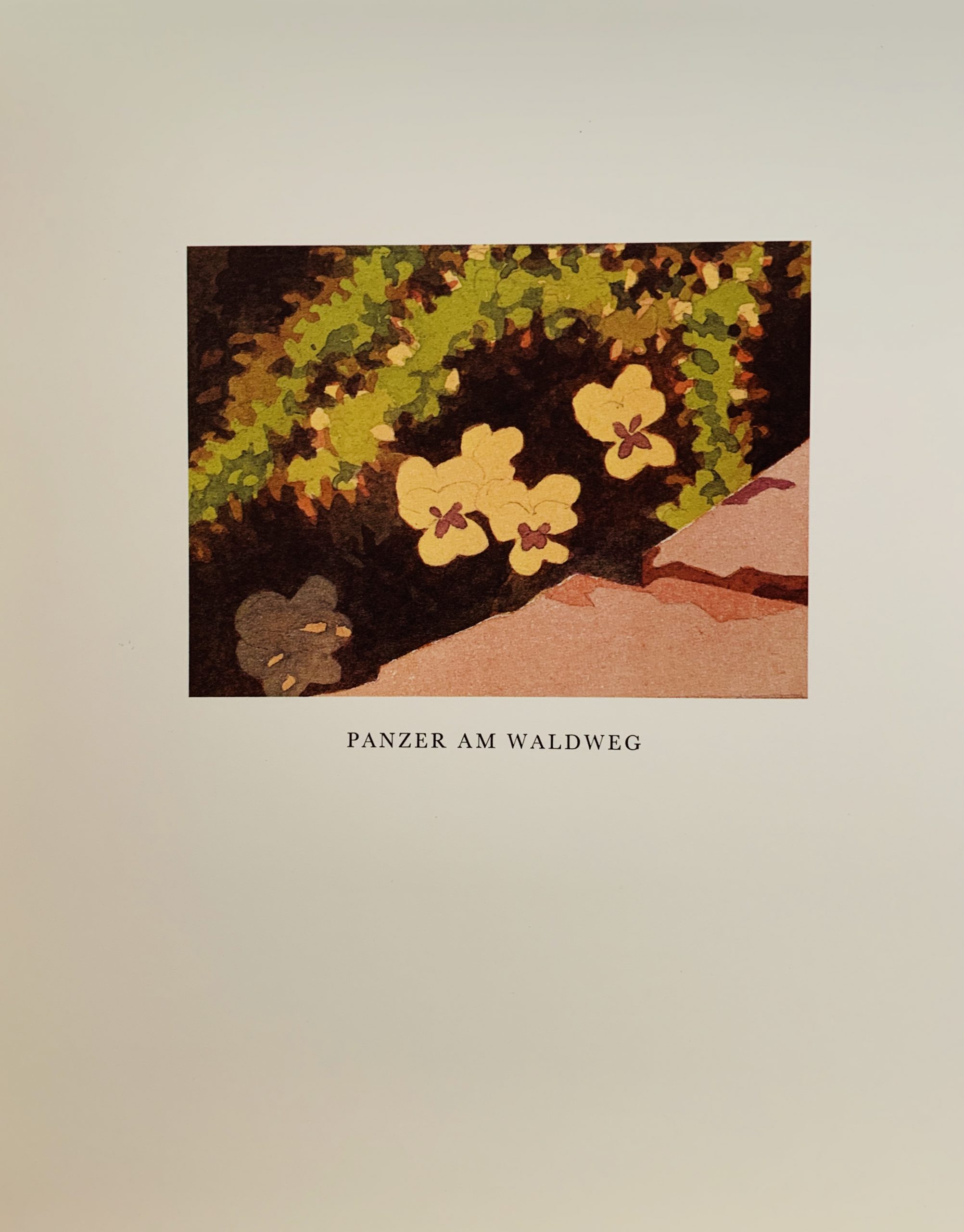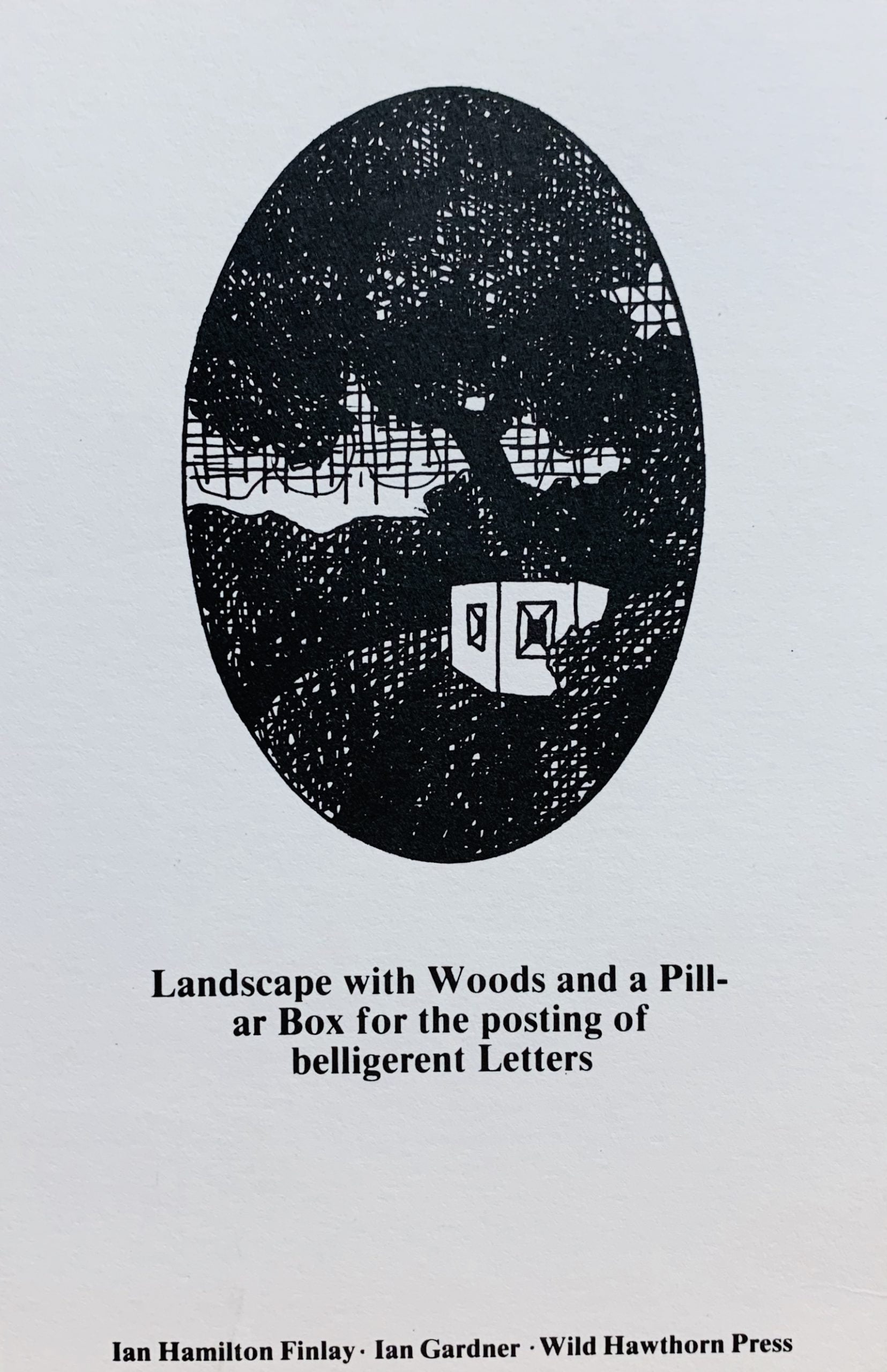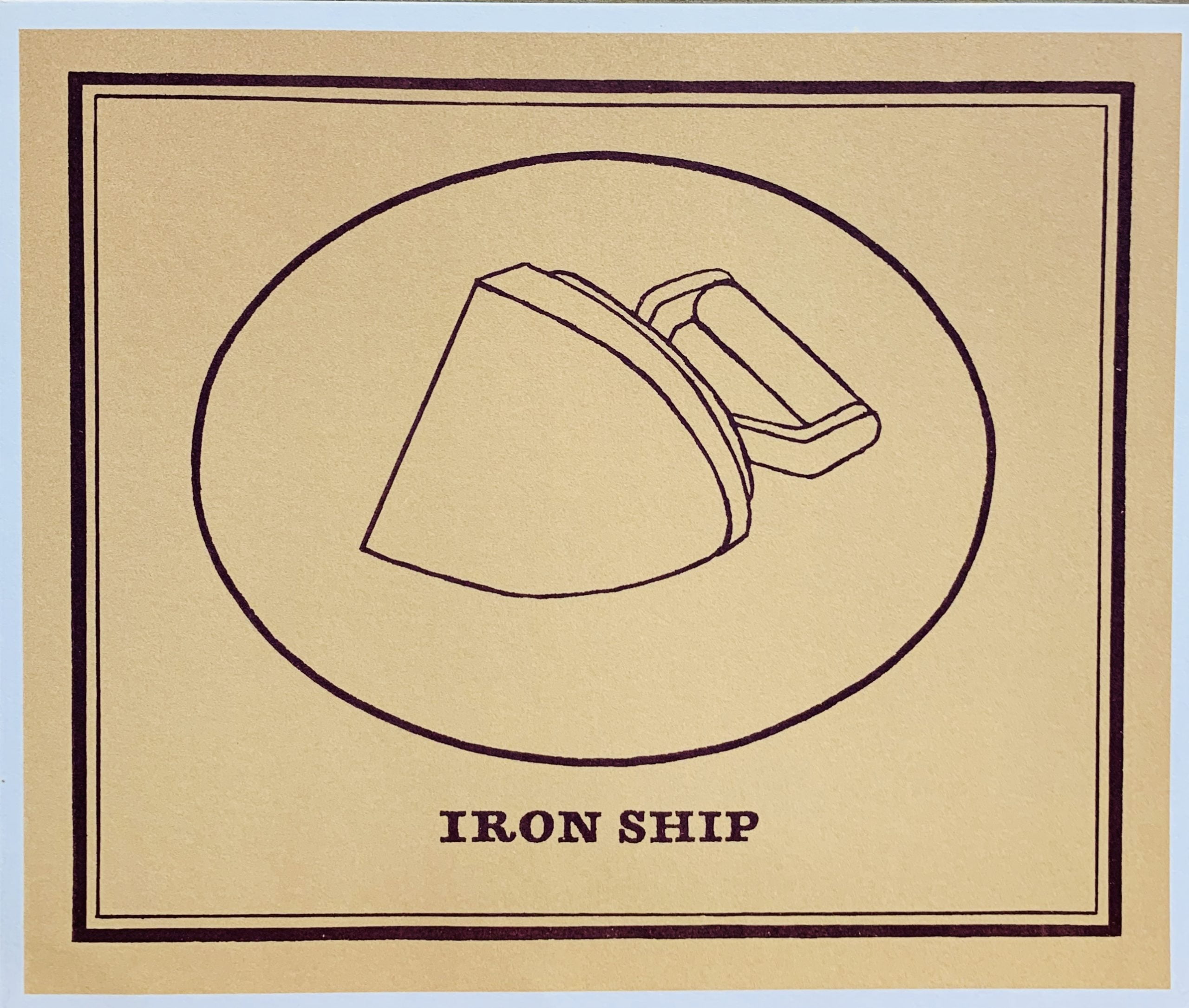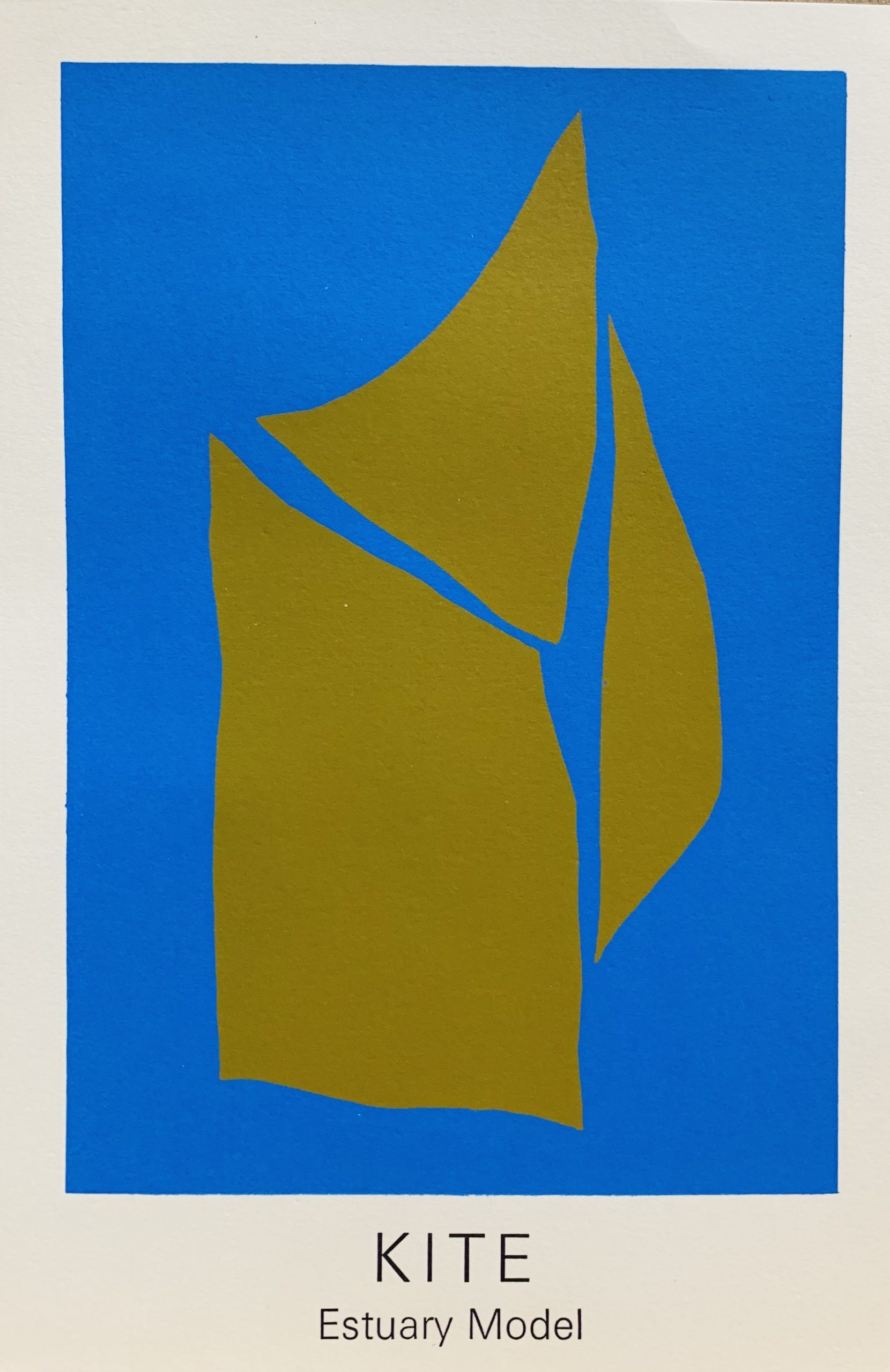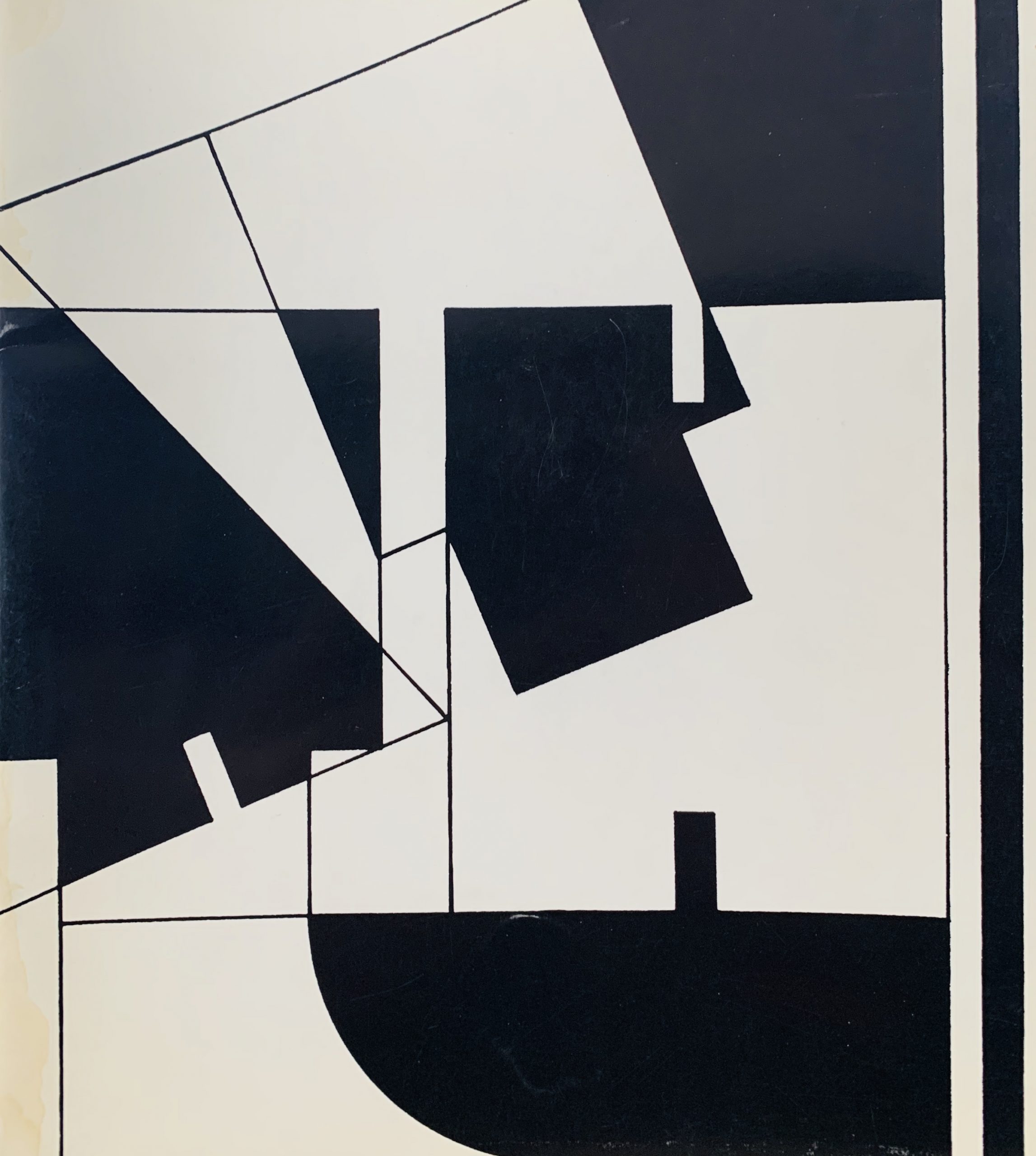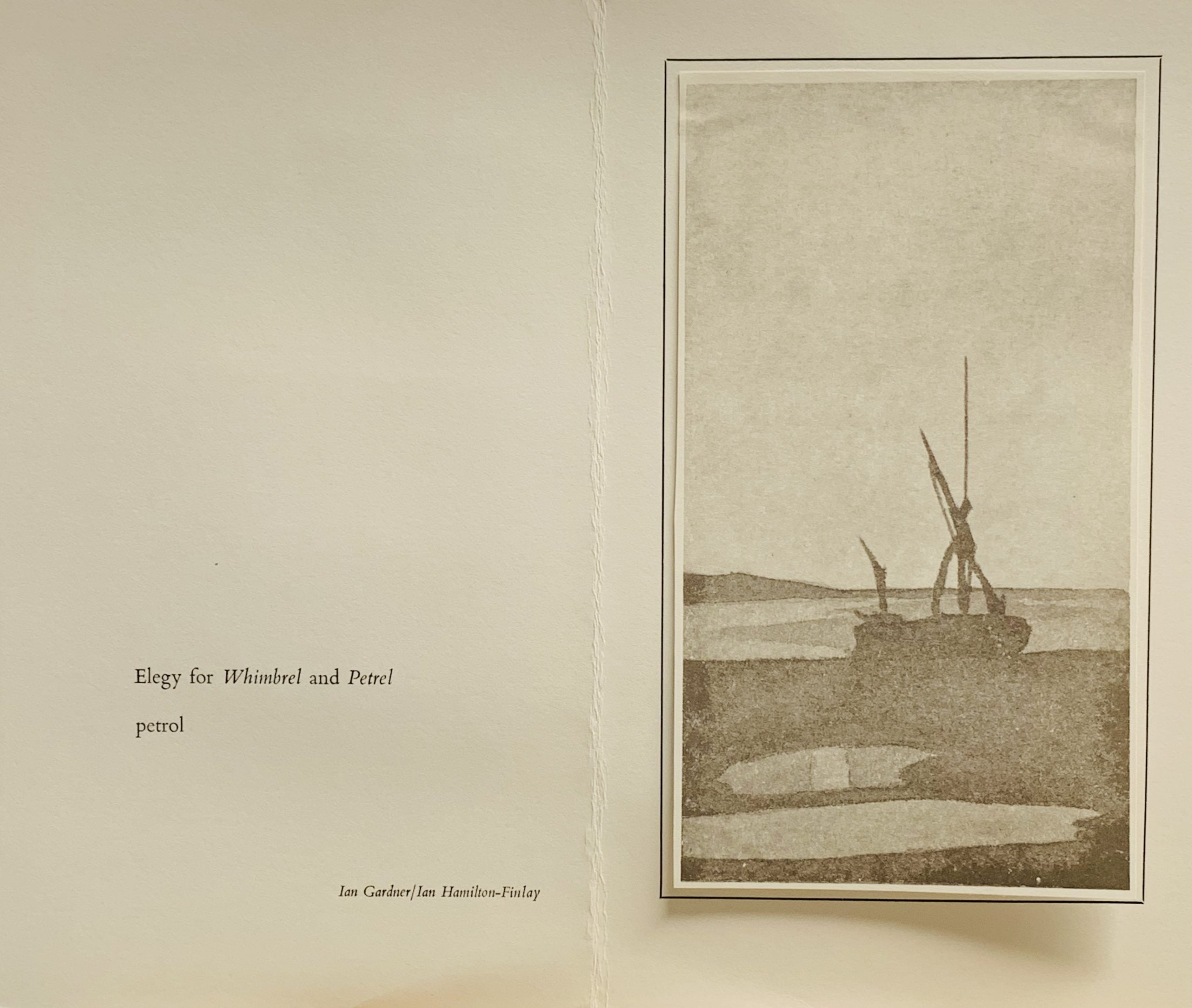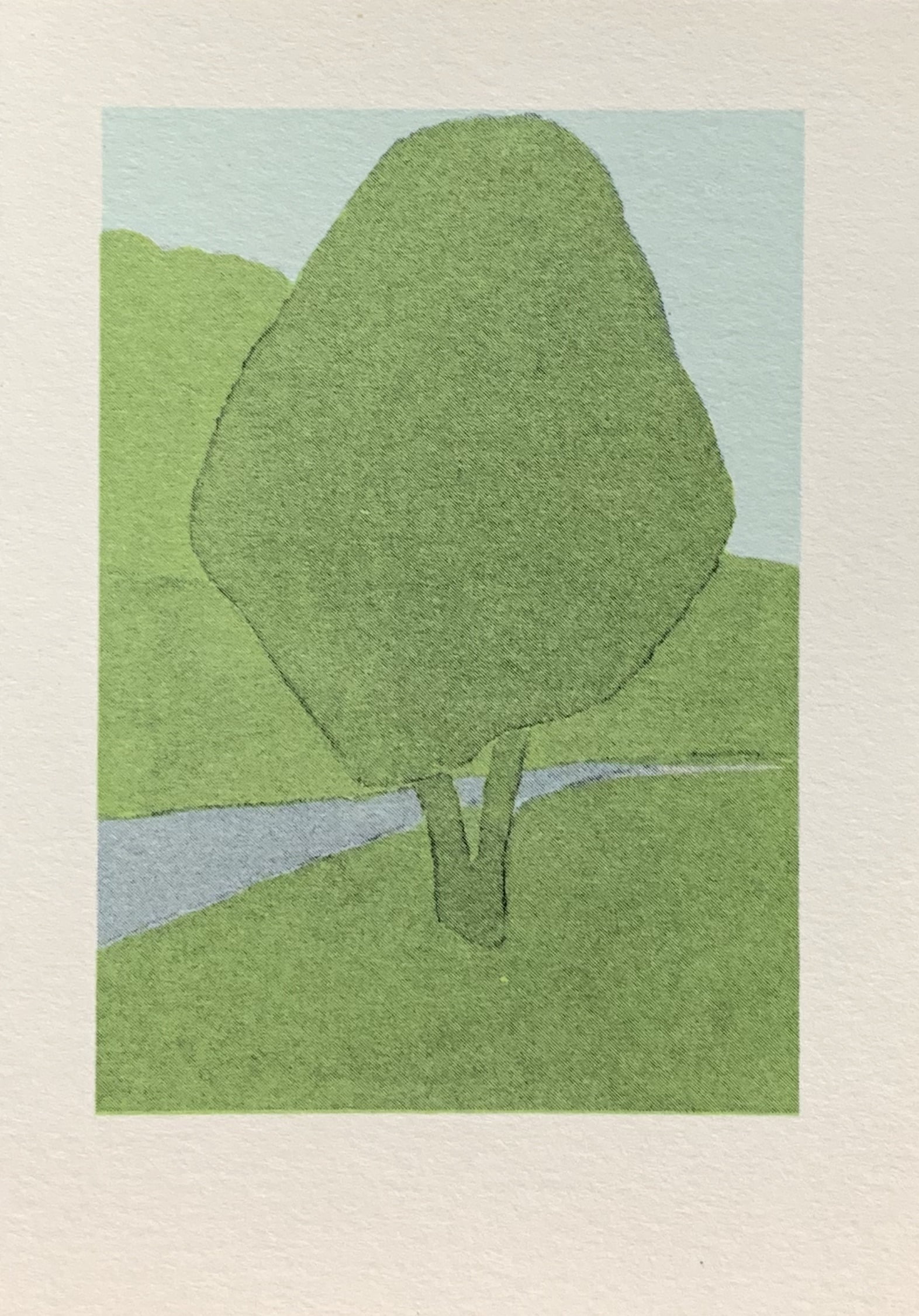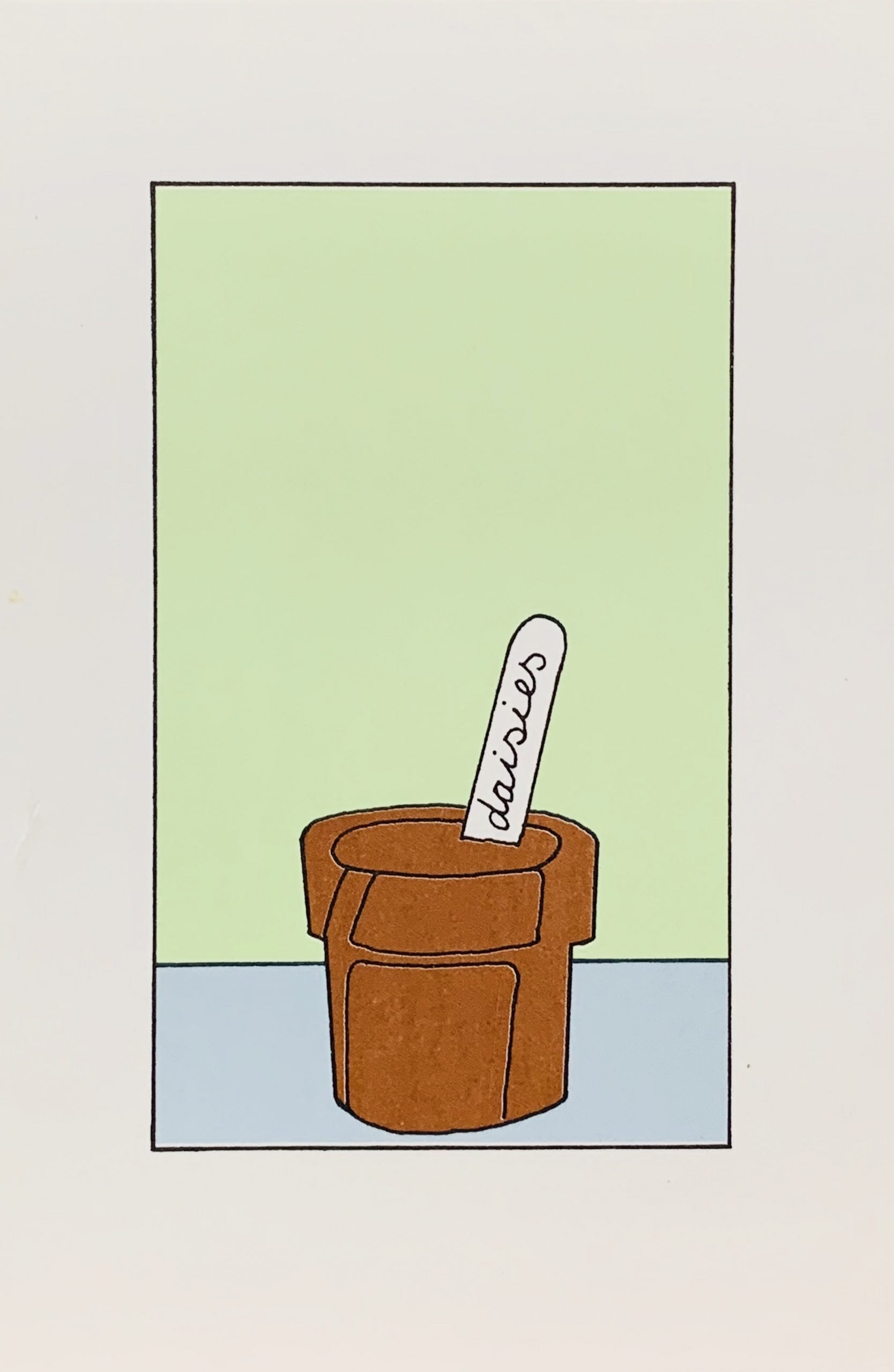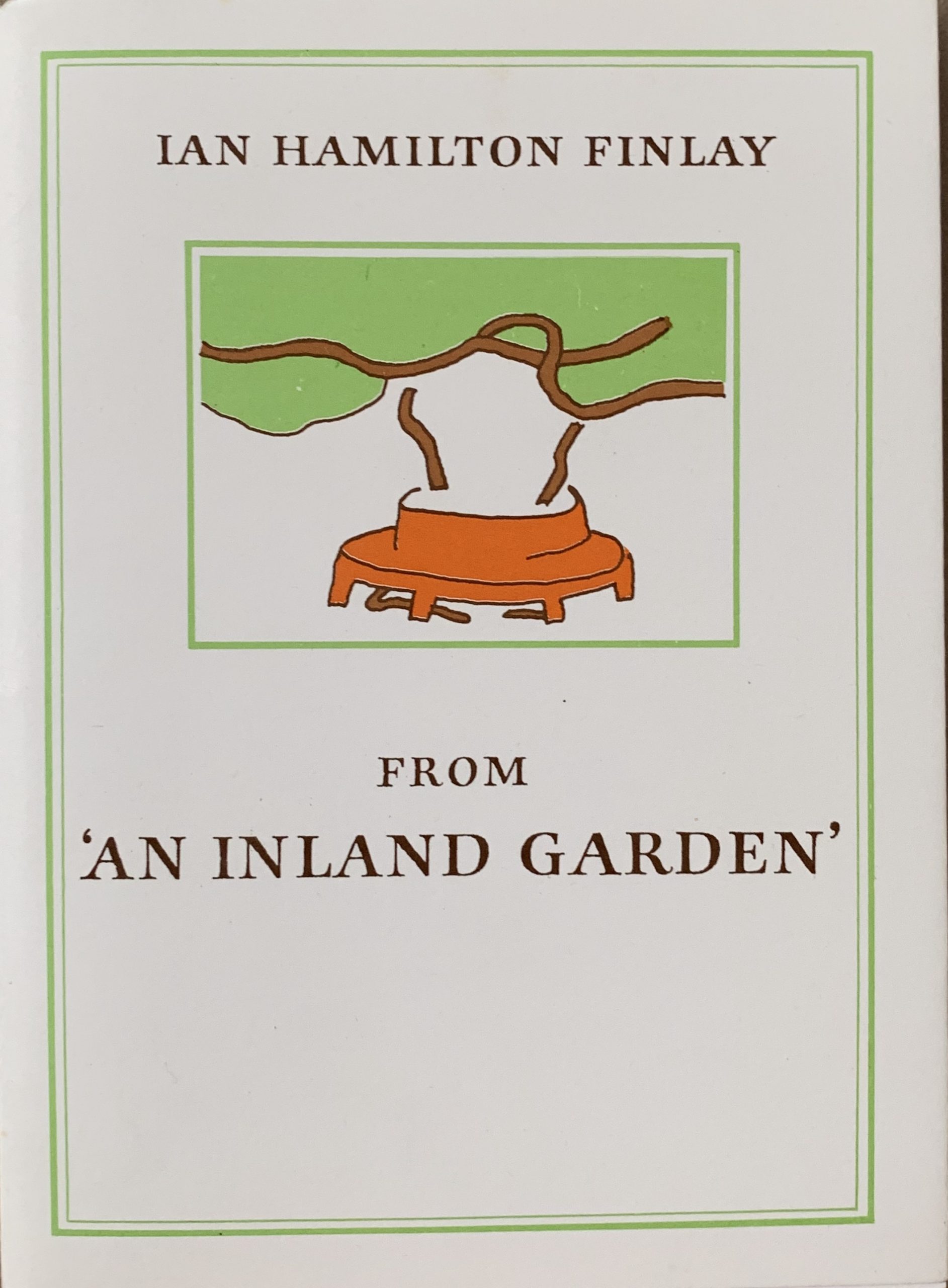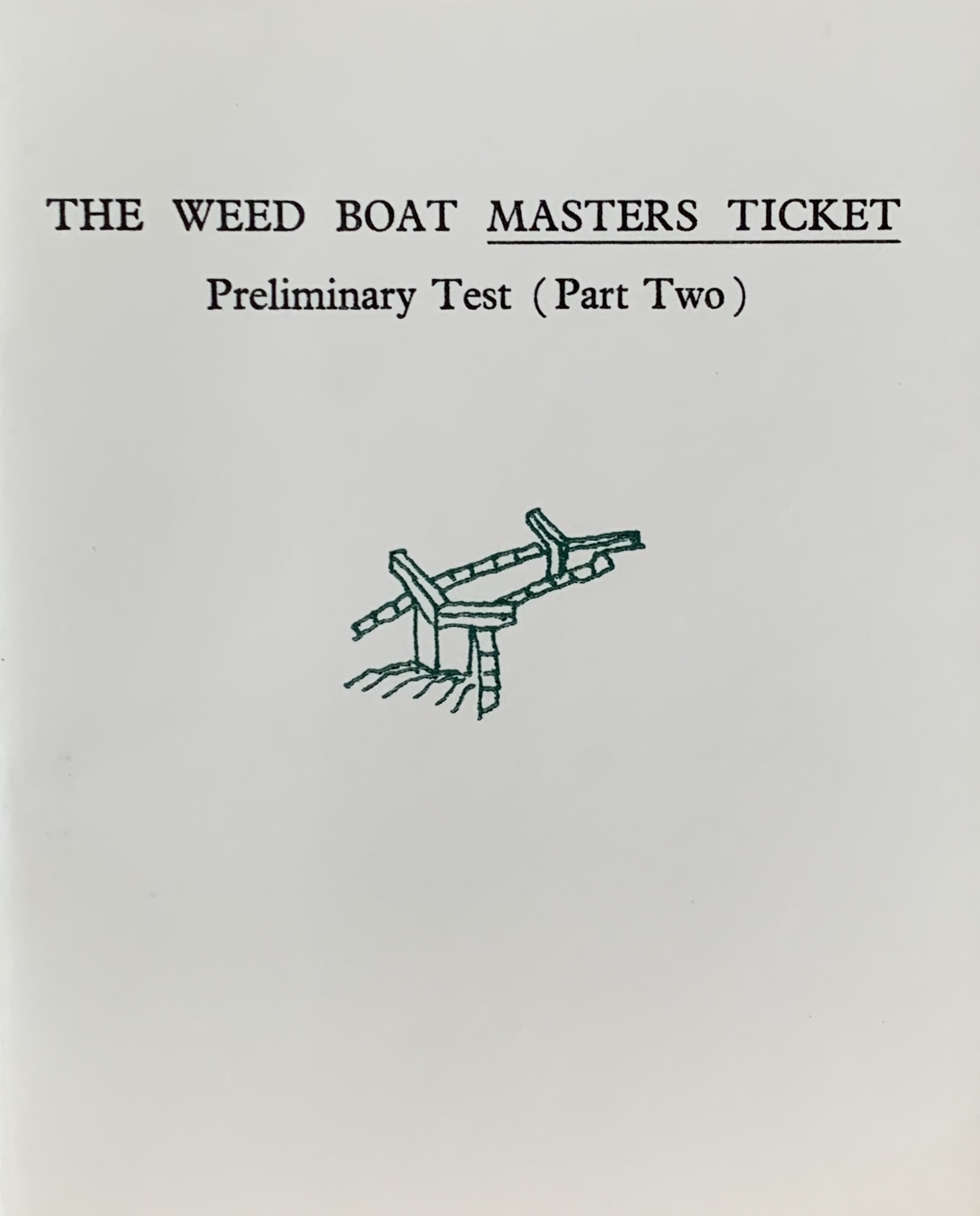27 Sep A CLASSICAL LANDSCAPE. 1981.
Little Sparta: Wild Hawthorn Press, 1981
43.2 x 35.5cm, full colour on white paper offset lithograph with a reproduced painting by Ian Gardner of three boats near a river with trees. The sub title is "Arcades, Asphodel, Startled Fawn, below Richmond Bridge. After W. Steer, E. March, F. Carr." Asphodel is the flower that is said to carpet Hades, and a food of the dead. The image of the boats under the recognisable bridge suggests that of the passage to Hades via the Styx. The startled fawn of the original painting (presumably a composite of those by the three named painters) has long gone having presumably been startled. VG.
...

